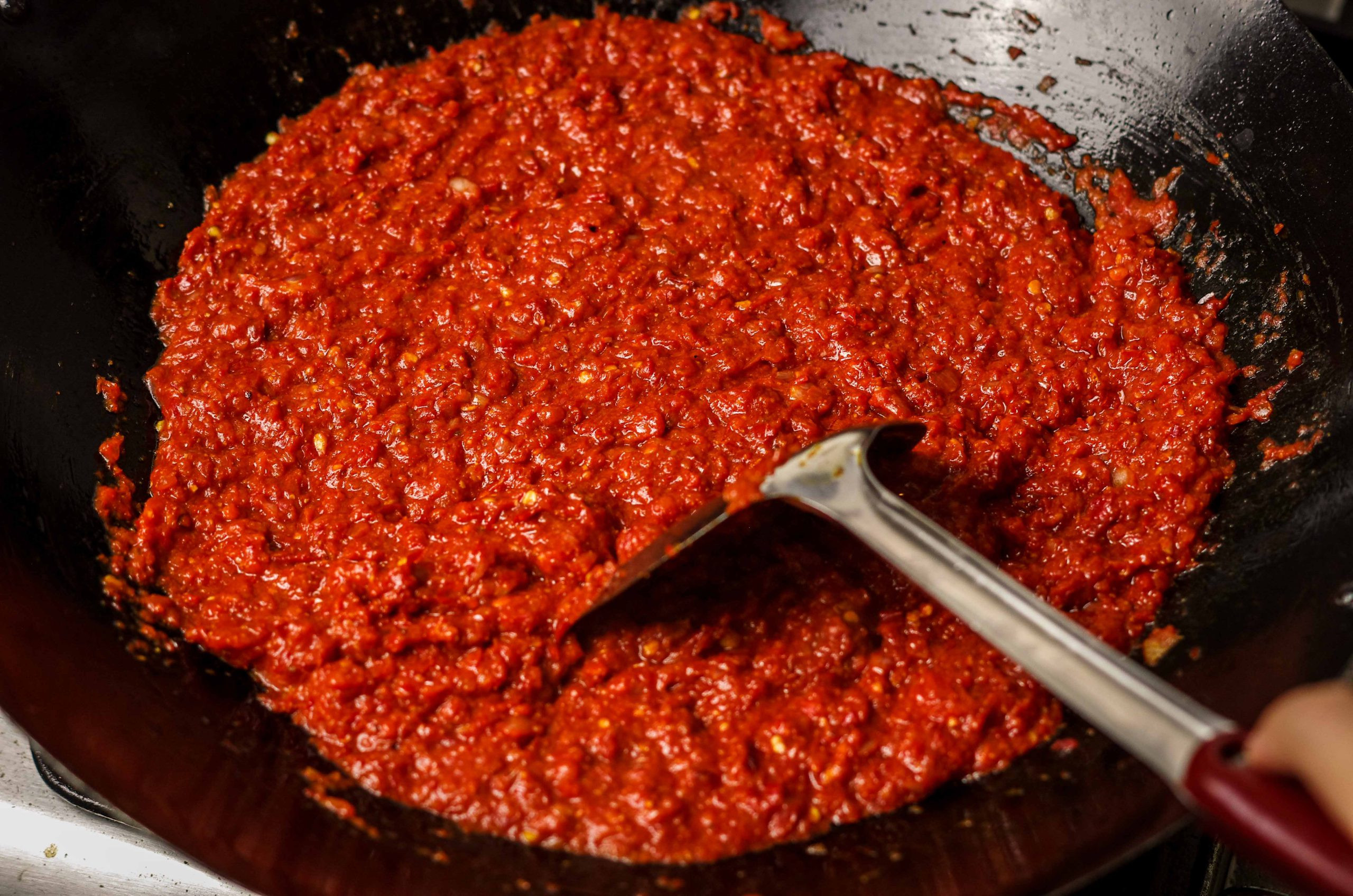Mastering sambal tambrinyu, the famed Kristang condiment
by Denise Chin16 Apr 2021
A home cook with Melaka-Portuguese heritage learns that making her childhood sambal is a balance of science, instinct, and years of wisdom.
I grew up helping my mother make sambal tambrinyu for weeknight dinners. It is a family recipe, passed down from my great-grandmother, Mama. As my sister and I ground chillies with shallots and buah keras, scooped homemade belacan, and massaged tamarind pulp into a thick paste, my mother told us stories of growing up in the Portuguese settlement of Melaka raised by Mama. We know Mama so well even though we had never met her. She was of Baba-Nyonya and Melaka-Portuguese descent, a devout Catholic, and a young widow who helped raise her grandchildren.
My family’s sambal tambrinyu recipe—which was published in a cookbook by my aunt: The Smell of Home by Rebecca Fatima Sta. Maria—is a paste of chilies, shallots and buah keras fried until the oil separates (naik minyak), and seasoned with tamarind, salt, and sugar. Belacan can be added, but it’s okay to leave it out if making this vegan. The end result is a spicy, tangy, and sweet condiment that goes well with fried fish, prawns, ikan billis, petai, or nasi lemak. We don’t add garlic or ginger. We don’t add rounds of onion or lemongrass. Occasionally, I like to add a few sprigs of daun limau purut for a citrus aroma. Sambal tambrinyu gets its acidity and tang from tamarind (hence, tambrinyu in Kristang, or creole Portuguese). Sambal tambrinyu is derived from sambal tempra, a base recipe for many Eurasian sambals. Other types of sambal in our family repertoire include sambal nenas (pineapple), sambal binagri (vinegar), sambal tomato, and sambal belacan.
While my mother and her siblings had the honour of Mama’s coaching, my sister and I had sambal-making master classes with our mother. Yet, few would be considered sambal masters. From speaking with family members, we all agree that making sambal tambrinyu has been a lifetime challenge. It is as much an art as it is a science. It requires training the senses. The best ways to learn are by watching someone make it in-person and lots of practice.
One of the challenges to making this right is, firstly, getting the correct ratio of chillies to shallots. Typically one part each, but this becomes difficult. For example, when the chillies are hotter than expected. Even when the ratio of ingredients is right, knowing when the spice blend is naik minyak or garing is always my challenge (and it seems, my sister’s too). My mother’s anecdotal indicator of naik minyak is waiting for someone in the household to sneeze (“That’s when it’s garing!”). It’s surprisingly accurate, but of course, not always reliable.
Advice from my aunts is slightly more scientific: taste it as it cooks, watch for the oil to separate from the paste, or detect a change in colour to a darker hue of red. And finally, the most common challenge to making sambal tambrinyu is getting the ratio of sweet-tangy-salty just right. This is when you know, you know that sambal tambrinyu is ready. The winning strategy so far has been to add the seasoning ingredients a little at a time. Add the tamarind and salt, and then sugar a spoonful at a time, and eventually, balance will be achieved.
To make Denise’s family’s sambal tempra, see the recipe here.
***
Denise Chin grew up to the smells and sounds of Peranakan cooking, which inspires her culinary adventures in Portland, Oregon, where she currently resides.
Read next
A father’s legacy in soy sauce
A tale of family, grief, and kicap

Sambal tempra
A base sambal for many Eurasian dishes

How my grandma’s recipes bridged a 10,000km, 20-year gap
A tale of old recipes and belonging





